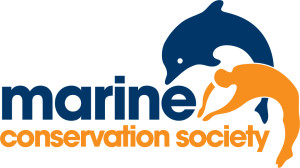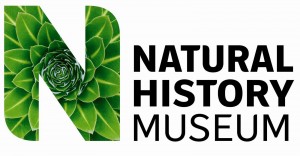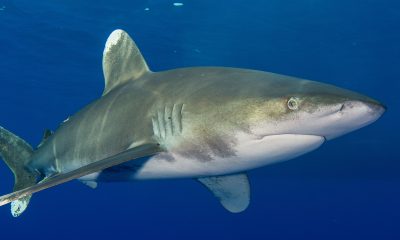News
Acid, alien and hot! Beach visitors to put seaweeds under the spotlight

Beach visitors are being asked to turn scientist this summer to help understand a bit more about the seaside’s unsung hero – seaweed!
The Marine Conservation Society (MCS) has teamed up with the Natural History Museum on a project to get people out on our shores to help study seaweeds. With their 3D structure and multi-coloured forms, seaweeds create shelter and food for an immense diversity of other marine organisms and also support commercial fisheries. But most people don’t give them a second look, and even consider them a slippery nuisance we could do without!
The Big Seaweed Search, a new citizen science project, will help to map out the distribution of seaweeds around Britain. Seaweed distribution and abundance around our coasts is changing. To investigate why this might be and what’s out there, the Big Seaweed Search will try and establish just what is affecting seaweeds on British coasts.
Miranda Krestovnikoff, TV presenter and diver says: “This is a great way to find out more about our beautiful UK seaweeds, and to help researchers track how they are faring in changing environmental conditions. And anyone can join in. At last, seaweeds will get the attention they deserve!”
The seashores and shallow seas around Britain support over 650 species of seaweed, making them globally significant and an important component of British biodiversity. The study will focus on 14 species, to increase our knowledge of how sea temperature increase, sea level rise, impacts of non-native species and increasing acidity are affecting the distribution of different species of seaweed.
“It’s easy to take them for granted, but seaweeds are fascinating, provide shelter and food for an immense variety of marine wildlife, and are of enormous use to humanity”, says Professor Juliet Brodie, of the Natural History Museum. “People are unaware that our daily lives are affected by seaweeds in many ways, from foods and medicines to buffering the effects of rough seas on our vulnerable coastlines”.
In the Big Seaweed Search, eight species of conspicuous wracks (part of the common names of several species of seaweed) have been selected for the public to record. Many of these will probably be familiar, such as bladder wrack, Fucus vesiculosus, with its bladders resembling bubble-wrap that pop underfoot, and knotted wrack, Ascophyllum nodosum, which produces a single egg-like bladder once a year and can live for an estimated 50-60 years.
The study also hopes to unearth more about non-natives and their impact on British coasts. “One of the most well-known ‘aliens’ listed in the study is wireweed, Sargassum muticum, a brown seaweed that was first recorded on the south coast of England in 1973 and has spread very rapidly since then. Another conspicuous non-native seaweed and a favoured food in Japan, Wakame, Undaria pinnatifida, was first recorded in Britain in 1994 on pontoons but is now starting to colonise rocky shores. These ‘aliens’ are here to stay so we need to learn to live with them,” says Juliet.
Justine Millard, MCS Head of Education and Outreach, says the study will establish whether any of these seaweeds are changing in their range, or becoming more or less widespread. “Anyone can be a citizen scientist. We’ll provide simple instructions and an identification guide so that everyone can make a valuable contribution to our knowledge of this important and underappreciated group.”
To take part, register at www.nhm.ac.uk/seaweeds.
Photo: Frogfish Photography
Gear News
Scubapro Free Octopus Promotion 2024

Free Octopus with every purchase of a SCUBAPRO regulator system
Just in time for the spring season, divers can save money with the FREE OCTOPUS SPRING PROMOTION! Until July 31st SCUBAPRO offers an Octopus for free
with every purchase of a regulator system!
Get a free S270 OCTOPUS with purchase of these combinations:
MK25 EVO or MK19 EVO with A700
MK25 EVO or MK19 EVO with S620Ti
MK25 EVO or MK19 EVO with D420
MK25 EVO Din mit S620Ti-X
Get a free R105 OCTOPUS with purchase of the following combinations:
MK25 EVO or MK19 EVO with G260
MK25 EVO or MK17 EVO with S600
SCUBAPRO offers a 30-year first owner warranty on all regulators, with a revision period of two years or 100 dives. All SCUBAPRO regulators are of course certified according to the new European test standard EN250-2014.
Available at participating SCUBAPRO dealers. Promotion may not be available in all regions. Find an authorized SCUBAPRO Dealer at scubapro.com.
More information available on www.scubapro.com.
Blogs
Northern Red Sea Reefs and Wrecks Trip Report, Part 3: The Mighty Thistlegorm

Jake Davies boards Ghazala Explorer for an unforgettable Red Sea diving experience…
Overnight, the wind picked up, making the planned morning dive a bit bumpy on the Zodiacs to the drop point on Thomas Reef. There, we would dive along the reef before descending through the canyon and then passing under the arch before ascending the wall with a gentle drift. The site provided great encounters with more pelagic species, including shoals of large barracuda, tuna, and bigeye trevally.
Once back on the boat, it was time to get everything tied down again as we would head back south. This time, with the wind behind us, heading to Ras Mohammed to dive Jackfish Alley for another great gentle drift wall dive before then heading up the coast towards the Gulf of Suez to moor up at the wreck of the Thistlegorm. This being the highlight wreck dive of the trip and for many onboard, including myself, it was the first time diving this iconic wreck. I had heard so much about the wreck from friends, and globally, this is a must on any diver’s list. Fortunately for us, there was only one other boat at the site, which was a rarity. A great briefing was delivered by Ahmed, who provided a detailed background about the wreck’s history along with all the required safety information as the currents and visibility at the site can be variable.

Kitting up, there was a lot of excitement on deck before entering the water and heading down the shoreline. Descending to the wreck, there was a light northerly current which reduced the visibility, making it feel more like the conditions that can be found off the Welsh coast. At 10m from the bottom, the outline of the wreck appeared as we reached the area of the wreck which had been bombed, as our mooring line was attached to part of the propeller shaft. Arriving on deck, instantly everywhere you looked there were many of the supplies which the ship was carrying, including Bren Carrier tanks and projectiles that instantly stood out.

We headed around the exterior, taking a look at the large propeller and guns mounted on deck before entering the wreck on the port side to take a look in the holds. It was incredible to see all the trucks, Norton 16H, and BSA motorcycles still perfectly stacked within, providing a real snapshot in time.

Overall, we had four dives on the Thistlegorm, where for all of the dives we were the only group in the water, and at times, there were just three of us on the whole wreck, which made it even more special, especially knowing that most days the wreck has hundreds of divers. Along with the history of the wreck, there was plenty of marine life on the wreck and around, from big green turtles to batfish, along with shoals of mackerel being hunted by trevally. Some unforgettable dives.

The final leg of the trip saw us cross back over the Suez Canal to the Gobal Islands where we planned to stay the night and do three dives at the Dolphin House for the potential of sharing the dive with dolphins. The site, which included a channel that was teeming with reef fish, especially large numbers of goatfish that swam in large shoals along the edge of the reef. These were nice relaxing dives to end the week. Unfortunately, the dolphins didn’t show up, which was okay as like all marine life they are difficult to predict and you can’t guarantee what’s going to be seen. With the last dive complete, we headed back to port for the final night where it was time to clean all the kit and pack before the departure flight the next day.

The whole week from start to finish on Ghazala Explorer was amazing; the boat had all the facilities you need for a comfortable week aboard. The crew were always there to help throughout the day and the chefs providing top quality food which was required after every dive. The itinerary providing some of the best diving with a nice mixture of wreck and reef dives. I would recommend the trip to anyone, whether it’s your first Red Sea liveaboard in the Red Sea or you’re revisiting. Hopefully, it’s not too long before I head back to explore more of the Red Sea onboard Ghazala Explorer.

To find out more about the Northern Red Sea reef and wrecks itineraries aboard Ghazala Explorer, or to book, contact Scuba Travel now:
Email: dive@scubatravel.com
Tel: +44 (0)1483 411590
Photos: Jake Davies / Avalon.Red
-

 News3 months ago
News3 months agoHone your underwater photography skills with Alphamarine Photography at Red Sea Diving Safari in March
-

 News3 months ago
News3 months agoCapturing Critters in Lembeh Underwater Photography Workshop 2024: Event Roundup
-

 Marine Life & Conservation Blogs2 months ago
Marine Life & Conservation Blogs2 months agoCreature Feature: Swell Sharks
-

 Blogs2 months ago
Blogs2 months agoMurex Resorts: Passport to Paradise!
-

 Blogs2 months ago
Blogs2 months agoDiver Discovering Whale Skeletons Beneath Ice Judged World’s Best Underwater Photograph
-

 Gear Reviews3 months ago
Gear Reviews3 months agoGear Review: Oceanic+ Dive Housing for iPhone
-

 Marine Life & Conservation2 months ago
Marine Life & Conservation2 months agoSave the Manatee Club launches brand new webcams at Silver Springs State Park, Florida
-

 News3 months ago
News3 months agoWorld’s Best Underwater Photographers Unveil Breathtaking Images at World Shootout 2023


















